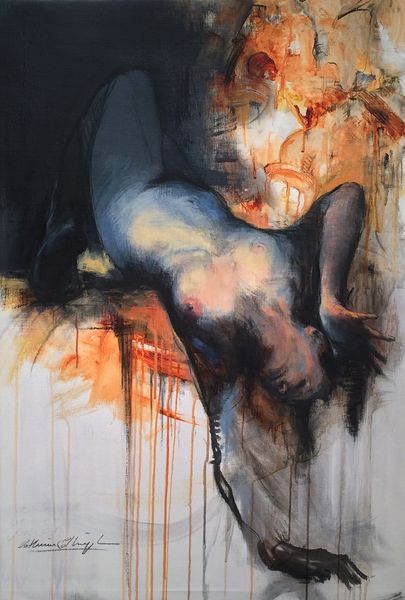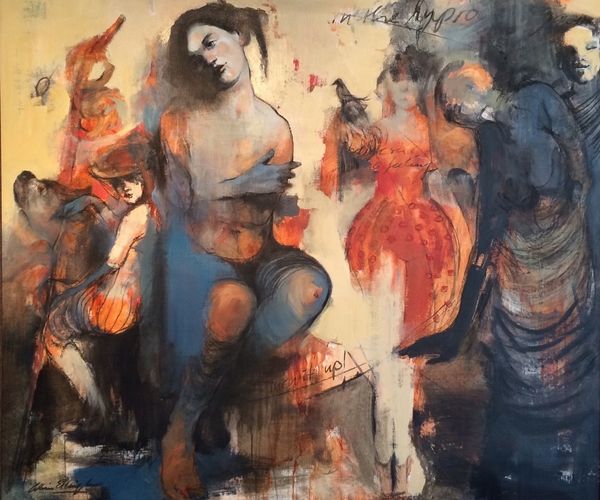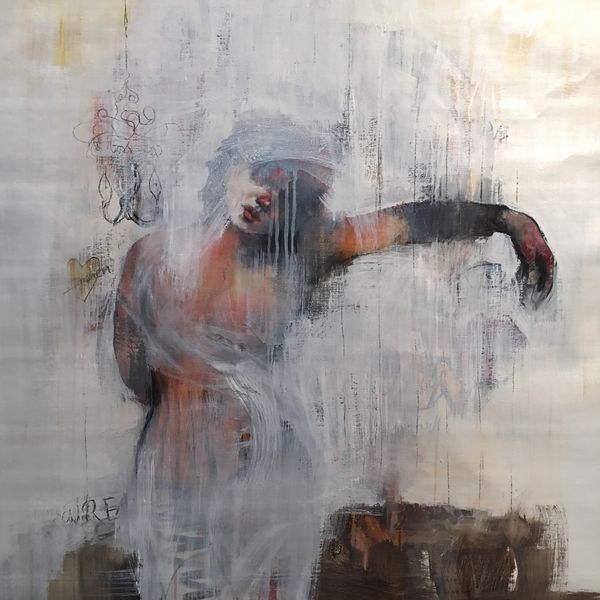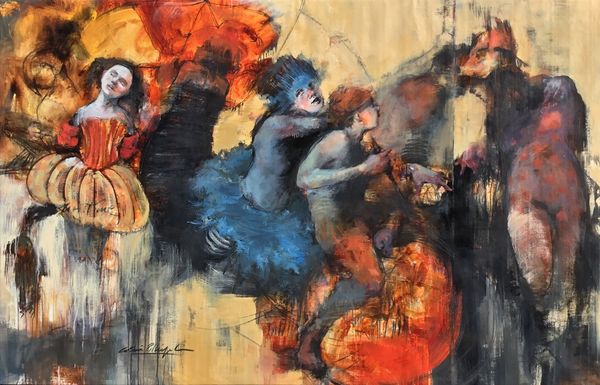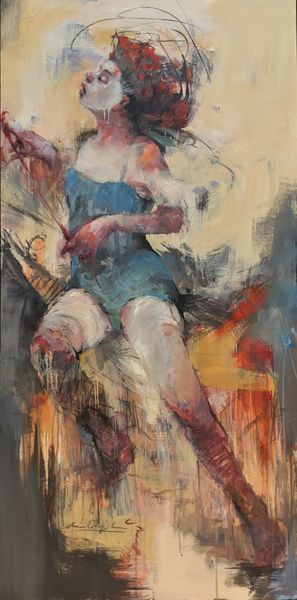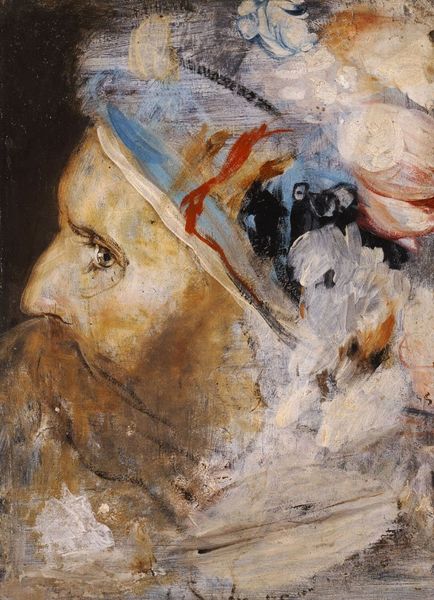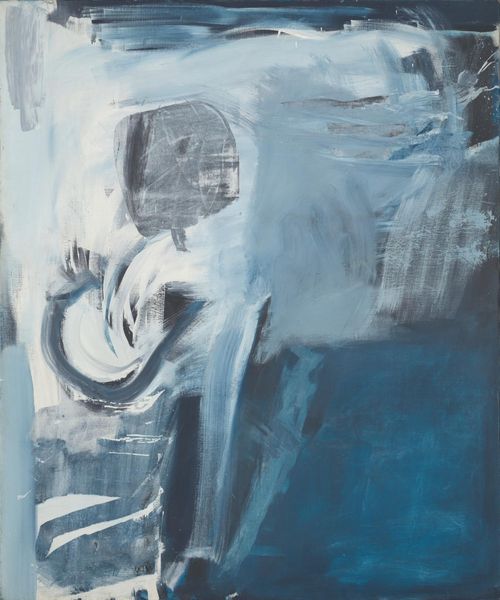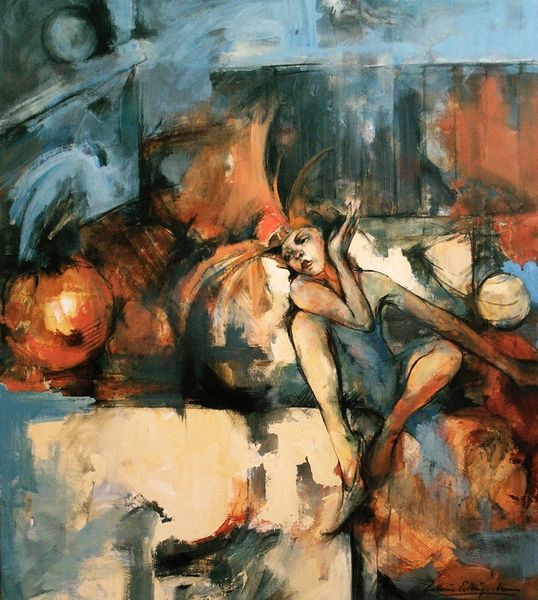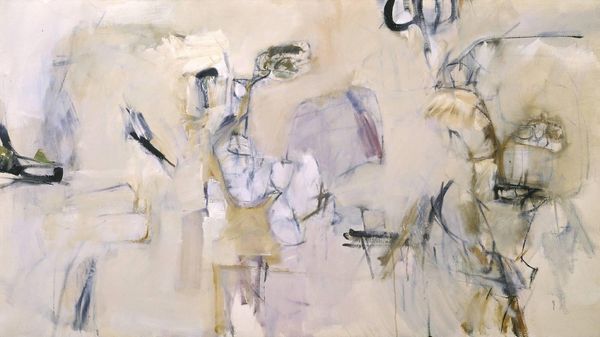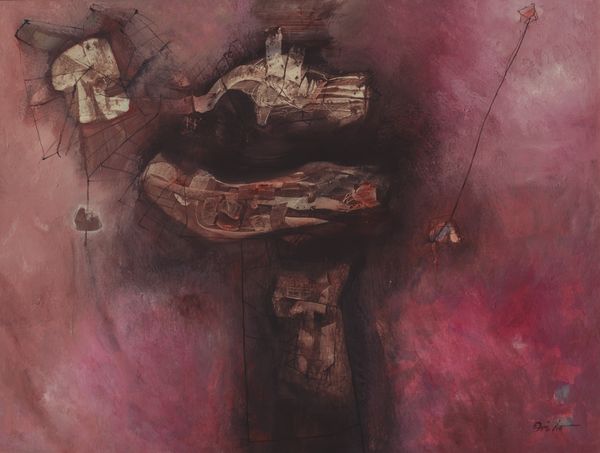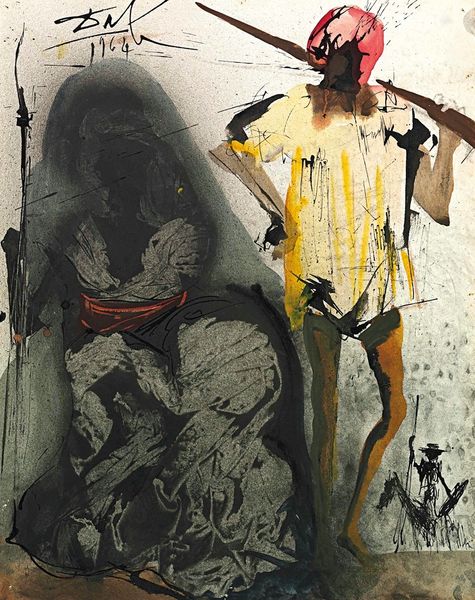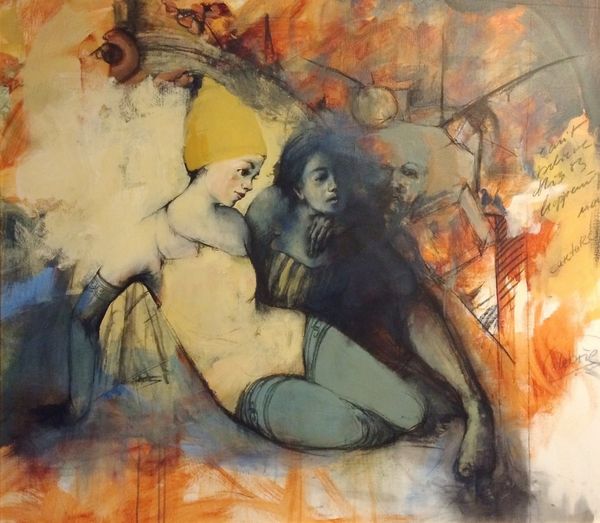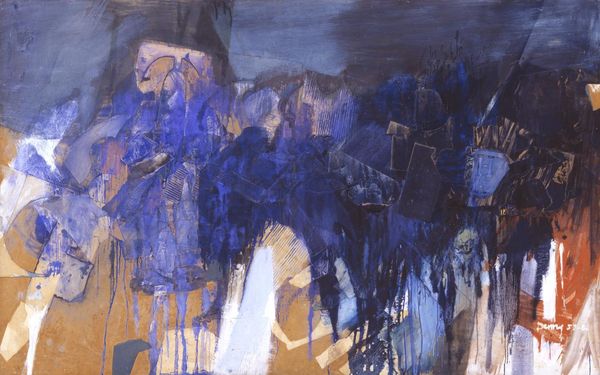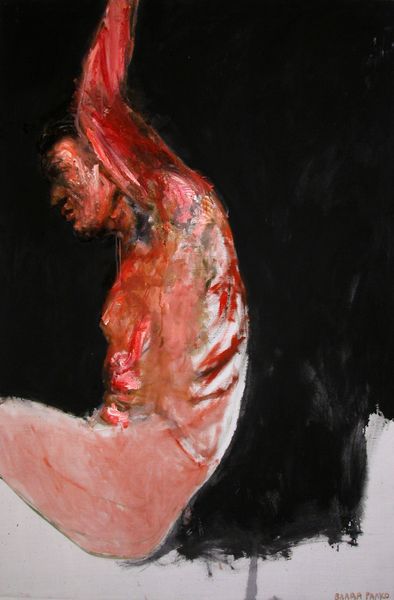
mixed-media, painting, acrylic-paint
#
portrait
#
mixed-media
#
acrylic
#
abstract painting
#
narrative-art
#
painting
#
acrylic-paint
#
figuration
#
acrylic on canvas
#
abstraction
#
nude
Copyright: Modern Artists: Artvee
Curator: Welcome. We are looking at a mixed media painting titled "Transparant blue" by Cathrine Edlinger-Kunze. It depicts two figures, both rendered in muted, almost spectral tones. One lies prone, the other seems to reach upwards. Editor: My first thought is that it evokes a sense of isolation, even vulnerability. The visible brushstrokes in acrylic on canvas underscore the handmade nature, the labor involved. I wonder about the physicality of making such a large piece; it's clearly a bodily engagement. Curator: It's interesting you mention vulnerability, because historically the nude female form in art has often been loaded with issues of power, of objectification. I’m intrigued how Edlinger-Kunze uses abstraction to possibly challenge and subvert these conventions, reclaiming the image. Editor: Subversion is one interpretation, for sure. Looking at the raw canvas visible around the edges and how the acrylic is layered gives it an unfinished feel, maybe deliberate. It pushes the process into the viewer's consciousness. I wonder if the 'transparent' aspect in the title is speaking to an exposing of the means of production itself? Curator: That's a compelling angle. Certainly, the open composition avoids a traditional narrative closure, inviting the viewer to participate in meaning-making. It seems relevant given the rising concerns surrounding representation of the human form that have grown among activist communities and museums recently. Editor: Absolutely. The tension comes from the interplay between figuration and abstraction. The brushwork emphasizes a material reality which moves beyond simple mimesis of a human. Think of what goes into sourcing the raw pigment, prepping the canvas - so many material and social histories before it gets here! Curator: Indeed, and what stories are conjured through their interactions. What initially comes across as melancholy perhaps suggests a type of resilience when we look more carefully at the almost visceral rendering. Editor: Exactly. Overall it asks us to look closer, doesn’t it, at the labor, material, and artistic intention baked into its making? Curator: Indeed. It certainly underscores the significance of historical context alongside contemporary engagement in our consumption and appreciation of art today.
Comments
No comments
Be the first to comment and join the conversation on the ultimate creative platform.
